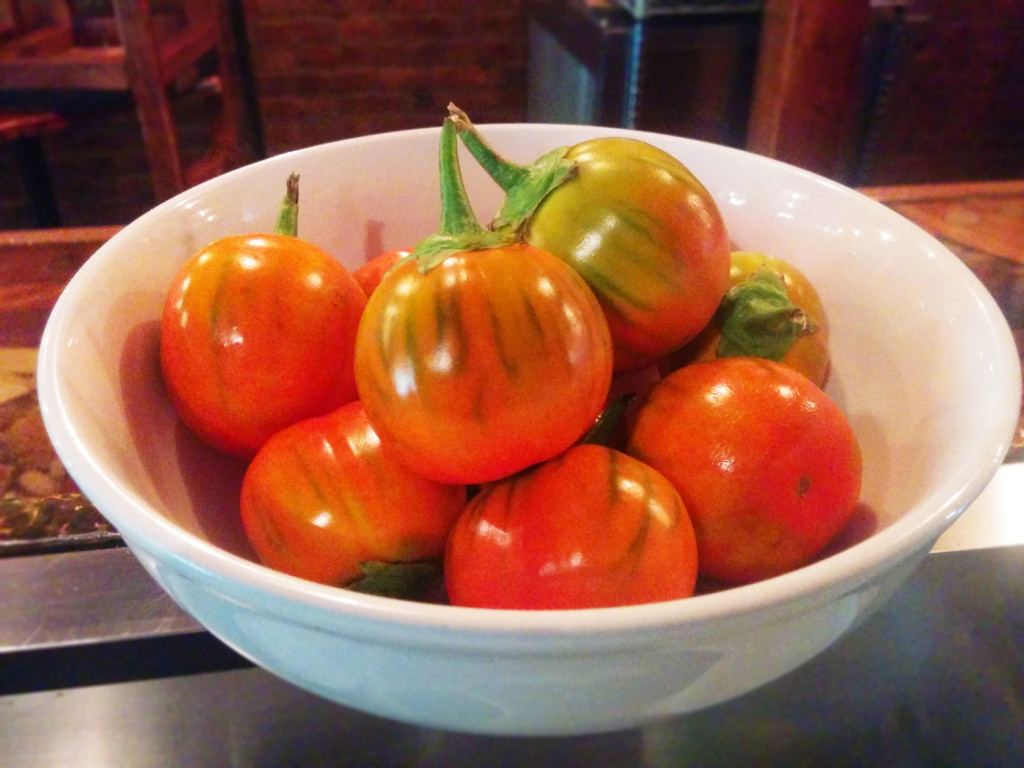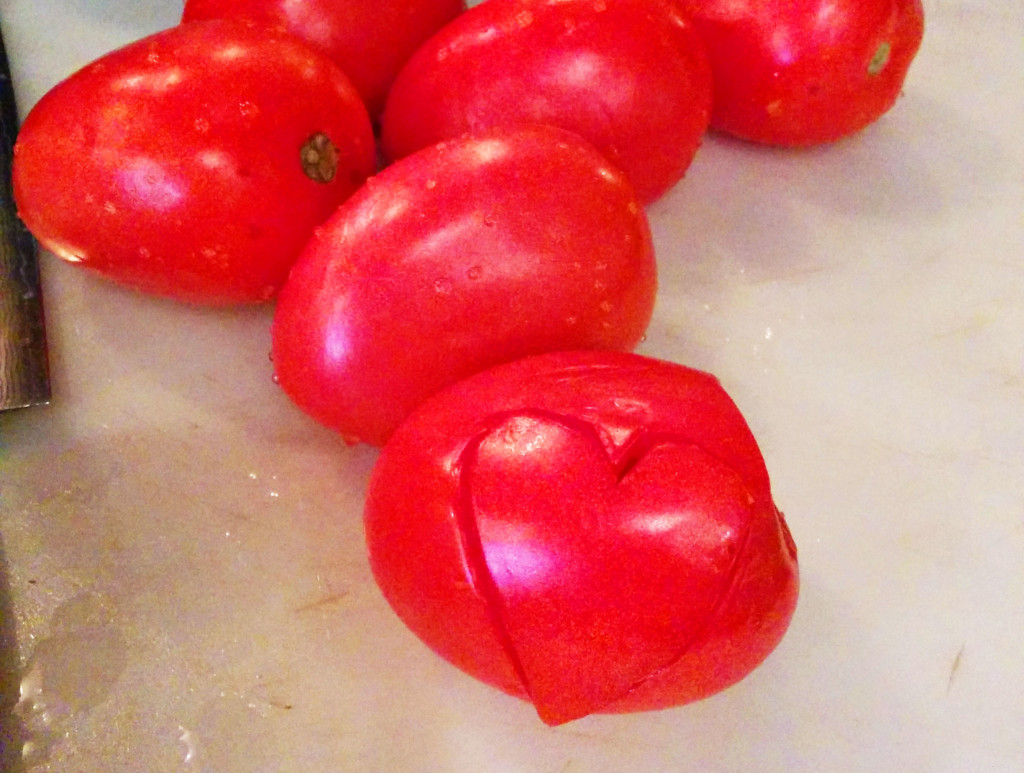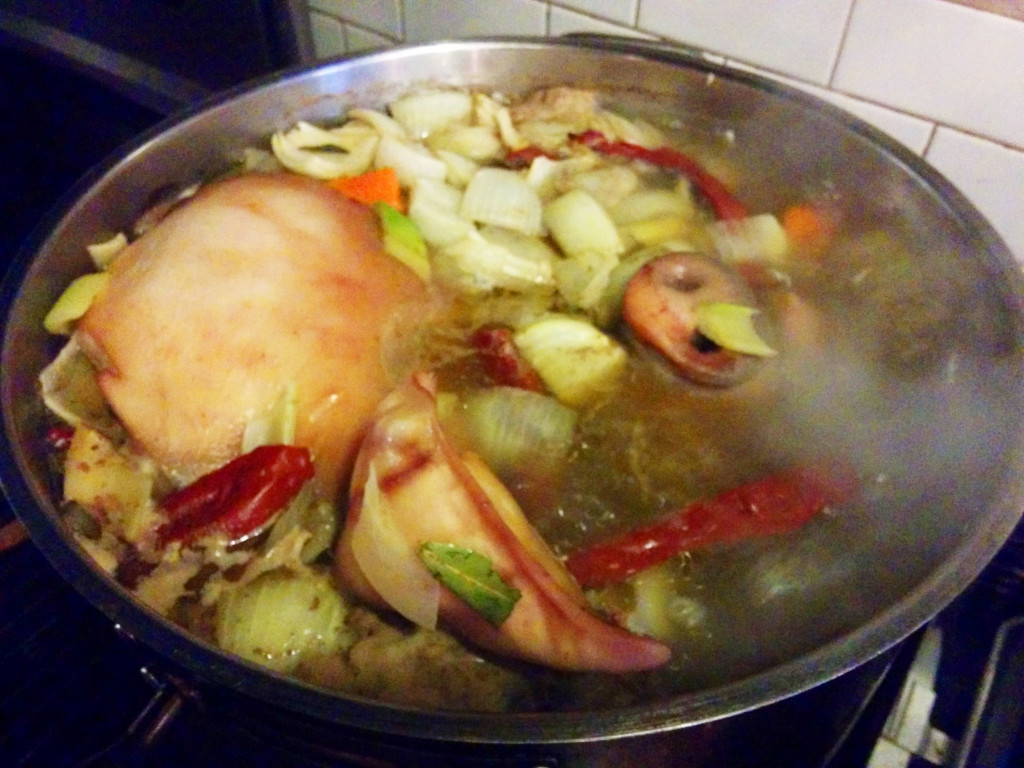
Undeterred by how quickly I’d flunked out of my first kitchen, I immediately set about finding a new one. Maybe a pizzeria? Pizza is my all-time favorite comfort food after all. I emailed a neighborhood Neapolitan pizzeria and got no reply. What about a sushi restaurant? I stopped by a sushi restaurant and asked to apprentice myself to the chef; he didn’t even want to talk to me. (Wait, was this a hint that I should come back 300 more times?) I kept walking and strode into a Latin American restaurant, one that I knew was helmed by a chef-owner known to use seasonal and local ingredients. It was busy but not slammed, the kitchen was comfortably large and relatively cool, and the staff was friendly and encouraging when I explained that I’d like to come in as an intern. As I left, the chef’s mother caught my elbow. “I overheard your conversation just now, and he definitely takes students in from time to time, so I think it will work out!” Things were looking much brighter.
After a brief interview, Chef put me on the weekend brunch shift, or Saturdays and Sundays from about 8 am to 4 pm. It was the only time that would fit with my day job schedule, and gave me a little time at night to have a social life. The early mornings were challenging, particularly if my previous night was a late one. Though I wasn’t a coffee drinker, I quickly developed a reputation at the restaurant for drinking my coffee strong and black.
The other line cooks quickly tasked me with basic prep work, from picking herbs and dicing tomatoes to making pupusas. Really though, my first task was to learn to speak the language. And not just the usual kitchen slang. Much to my chagrin, Spanish had not been covered anywhere in culinary school, and this was by far one of the most important skills I could have learned. While everyone spoke at least some English, the lingua franca was definitely Kitchen Spanish. I quickly learned the words for ingredients like watermelon (sandilla), peach (duraznos) and honeydew (melon blanco). I memorized the shorthand for our menu items, and mumbled my ingredient pick-ups to myself as I put components together. Most importantly, I got a crash course in Spanish slang. Some of it was innocuous enough (“ya tu sabes” isn’t in any of the textbooks, but it means “ya’ll already know”), and some of it would curl your grandmother’s hair. We would jokingly call each other “marica” (homo/gay) or “vieja” (old woman), yell “mierda!” (shit), “puta madre!” (motherfucker) and “que putas?” (what the fuck?) when things went wrong, and if a particularly fetching woman walked into the restaurant, or even within 15′ outside, whistles and murmurs of “masota!” (hot babe) would ensue.
Meanwhile, the other line cooks were interested in learning Chinese. “Teach us!” they pressed me. My sous chef had actually spent a few years working at Chinatown warehouses, so much to my surprise, he already knew some Cantonese. “Hey, how do you call a white person? Gwai lo, right? But that’s not what they call Mexicans, they call us mak lo!” I grinned sheepishly as he continued on. “Leung seung dai gai! That means, two boxes of large chicken! But the best is pok gai (bastard, go to hell), you can use it for everything!” One day, I explained that in Chinese, zou gai (lit. to be a chicken) means “to work as a prostitute.” The other guys thought this was the funniest thing ever, and repeated it it all afternoon.
During opening hours, the soundtrack in the dining room was a safe, appropriately eclectic mix of Latin pop and lounge music. When the doors were locked though, the speakers would blare with Beastie Boys, “Turn Down for What,” reggaeton and the latest banda hits. What’s banda music, you say? It’s best described as Mexican polka music, folksy and singer-driven but always with a brass section. I quickly got familiar with my homeboys Alfredito Olivas, El Recodo and El Komander, who was described by NPR as the “Jay Z of Mexican drug balladeers.”

Oh right, you wanted to hear about cooking at a restaurant. Cultural stuff aside, I certainly polished my skills as a cook, particularly by asking lots of questions. “So, how do you make refried beans?” I asked my sous chef. “Well first, you take the can opener,” he cracked.
While we did sometimes crack open cans of refried beans for ourselves, the kitchen went the extra mile and took no shortcuts for our guests. Chimichurri sauce was painstakingly pulverized by hand (no food processor) to get just the right “rustico” texture. Mole sauce required meticulously toasting chiles over two days, and rendering out the fat from a dozen duck legs to jump start the aromatics. I quickly learned that professional cooking was oftentimes hours of mundane manual labor, as I diligently diced through cases of onions, deseeded dozens of jalapenos and picked the leaves off unending piles of thyme.
Prep work was tedious and mindnumbingly boring. And yet, it taught me an incredible amount. I learned focus and concentration, how to strive for perfection even in the most trivial of tasks. I saw firsthand how I can always improve myself, by peeling a little faster, cutting with a little less waste, dicing with even more uniform pieces. I practiced the same tasks over and over until my motions were as confident and natural as a yawn.
When the orders started rolling in, that was when the fun really started. What takes the longest to cook? How much space do you have on the flat top? What happened to the chili sauce, how could it have possibly all disappeared in the last day? Quick, what can else can I sub on the fruit plate since we’re out of apples? It was a juggling act, with ample opportunities for something to go wrong. Running out of an ingredient at your station could mean precious minutes lost as you ran downstairs to the cooler, triggering a traffic jam as other dishes got backed up. But when everyone was riding the same wave, plates coming off the line hot and well-manicured, dup tickets flying off the board into the discard pile, you were witnessing a team performance as beautiful as an orchestra playing Beethoven’s 9th.

At the end of the brunch shift, the restaurant would close and pause for family meal, as the servers dove into a late lunch or early dinner. We line cooks typically would snack throughout the day, so the afternoon break was a chance to reset stations, clean, and have a drink. It is no small irony that professional cooks typically are the ones with the most irregular meal schedules.

What else? Day to day operations aside, I experienced what it’s like to be inspected by the health department (hint: throw everything into the low-boy and be very fast with a Sharpie) and what it takes to get an A-rating (woohoo!). I saw a number of new ingredients I’d never heard of before, like dogfish (a variant of shark), lemon verbena (which unsurprisingly smells lemony), and Turkish eggplants (don’t be fooled, it’s not a persimmon or a tomato). I was present when a film crew from Bizarre Foods with Andrew Zimmern stopped by to film, and we hastily put on chef jackets, combed our hair and cleaned up the kitchen as if the health inspector were coming.
All of this taught me to be a better cook, gave me an insider’s perspective on the restaurant industry and made me a more disciplined person. But much to my surprise, the most valuable part of my stint as a line cook was hearing the life stories of the other cooks.
To be continued…

Nice post!!